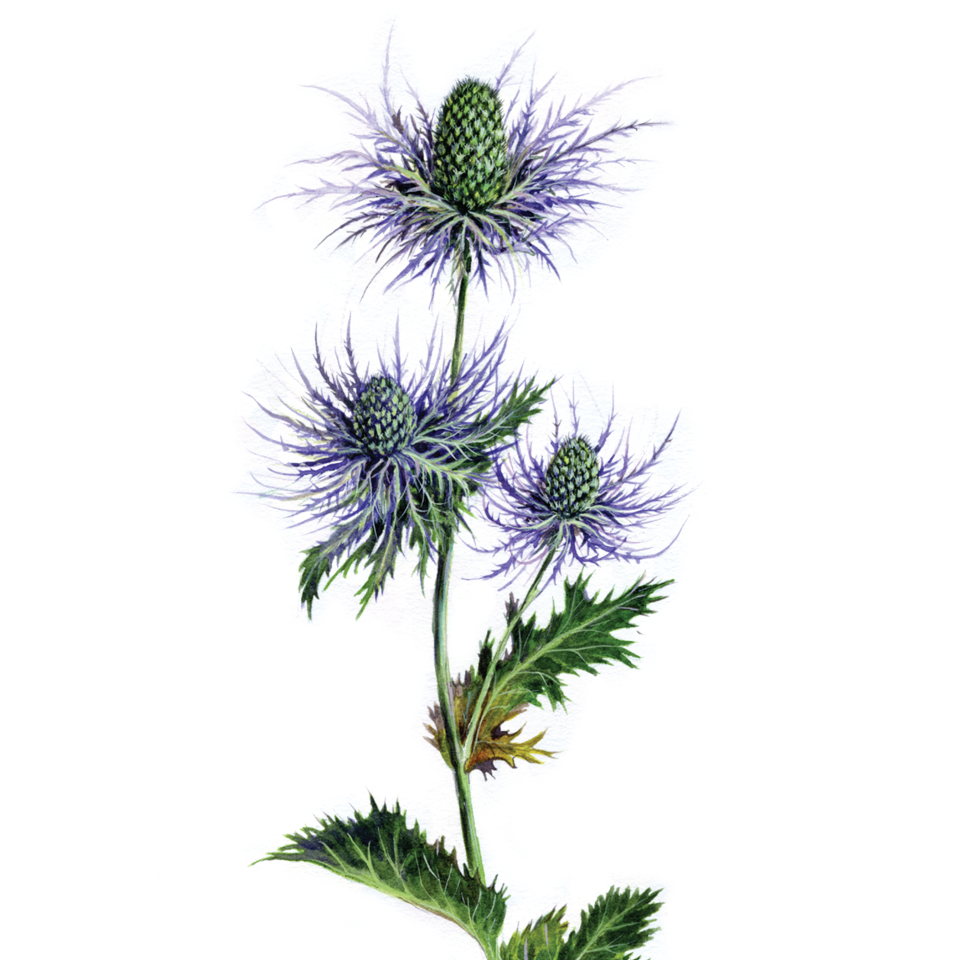
Alpine sea holly (Eryngium alpinum)
| Size |
|
| Blooming period |
|
| Habitat |
|
| Distribution |
|
| Kingdom |
|
| Phylum |
|
| Class |
|
| Order |
|
| Family |
|
| Genus |
|
| Species |
|
The Alpine sea holly grows between 30 and 80 centimeters in height. It has individual, upright stems, usually with three branches at the top. At the tip of the main branch are blue or blue-violet, globe-shaped inflorescences that resemble a cone. This conical appearance is created by the bristly involucral bracts, which are surrounded by pinnately cut, serrated, and spiny leaves, reaching up to 25 cm in length. The blue beauty, sometimes referred to as the "queen of the mountains," features five calyx lobes that are longer than the white corolla.
In Slovenia, it is very rare. You will find it only on Črna prst and Porezen, and occasionally in the Karawanks and the western Julian Alps. It is widespread in open, sunny, and more humid grasslands, on former hayfields, and on overgrown scree near the forest edge. This alpine species is also found elsewhere in the Alps, the French Jura, and the Dinaric Alps, extending to Bosnia and Montenegro.
DID YOU KNOW?
- The Alpine sea holly (Eryngium alpinum) is indeed a close relative of cumin and parsley.
- It is sometimes called the "queen of the mountains."
- In the past, it was believed that the root of the Alpine sea holly brought good luck in love.
- It was also known as "sleepyhead" and was placed in cradles to help babies sleep more easily.
Thank you.











